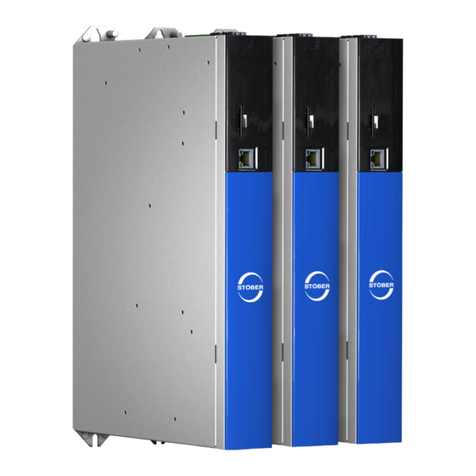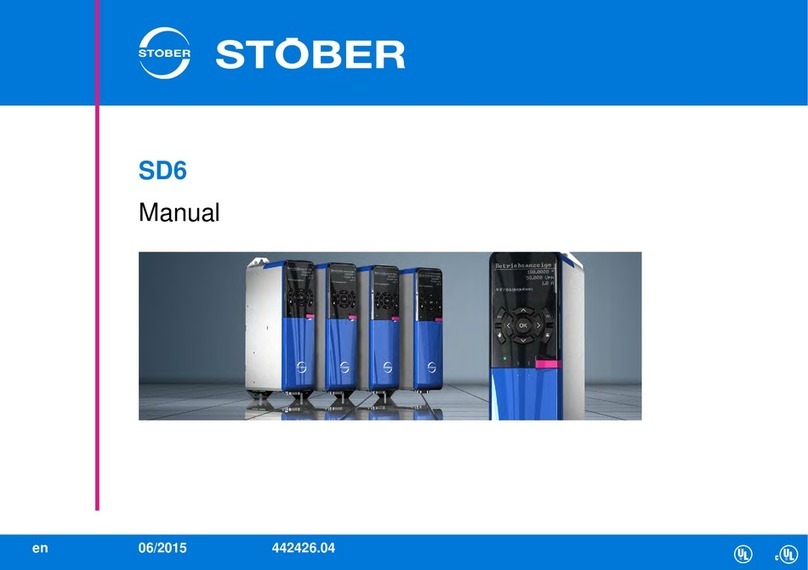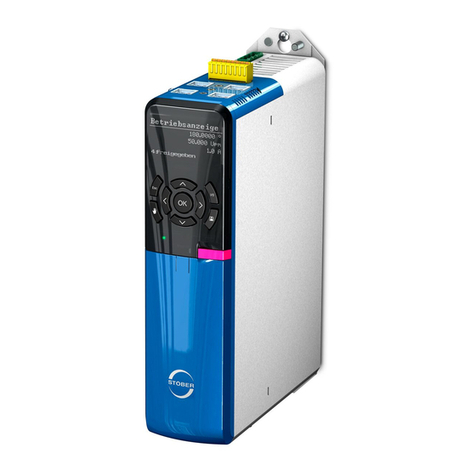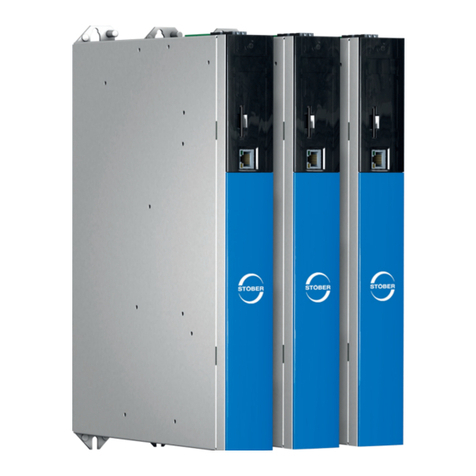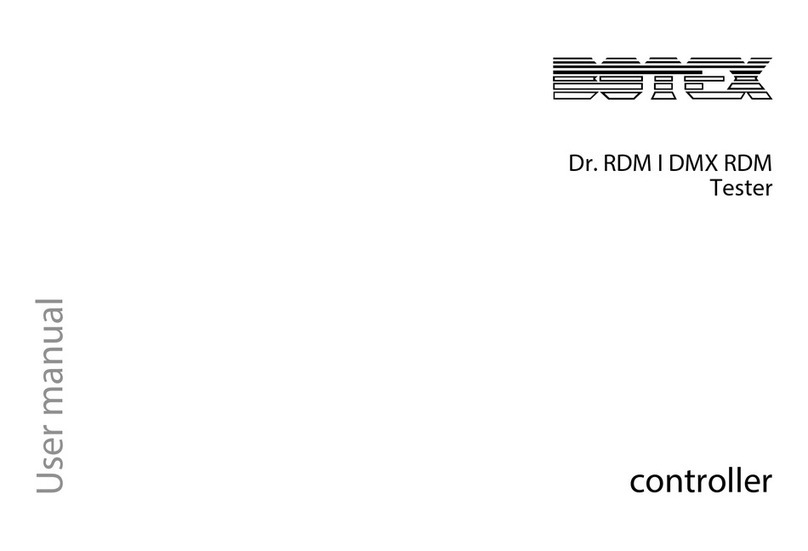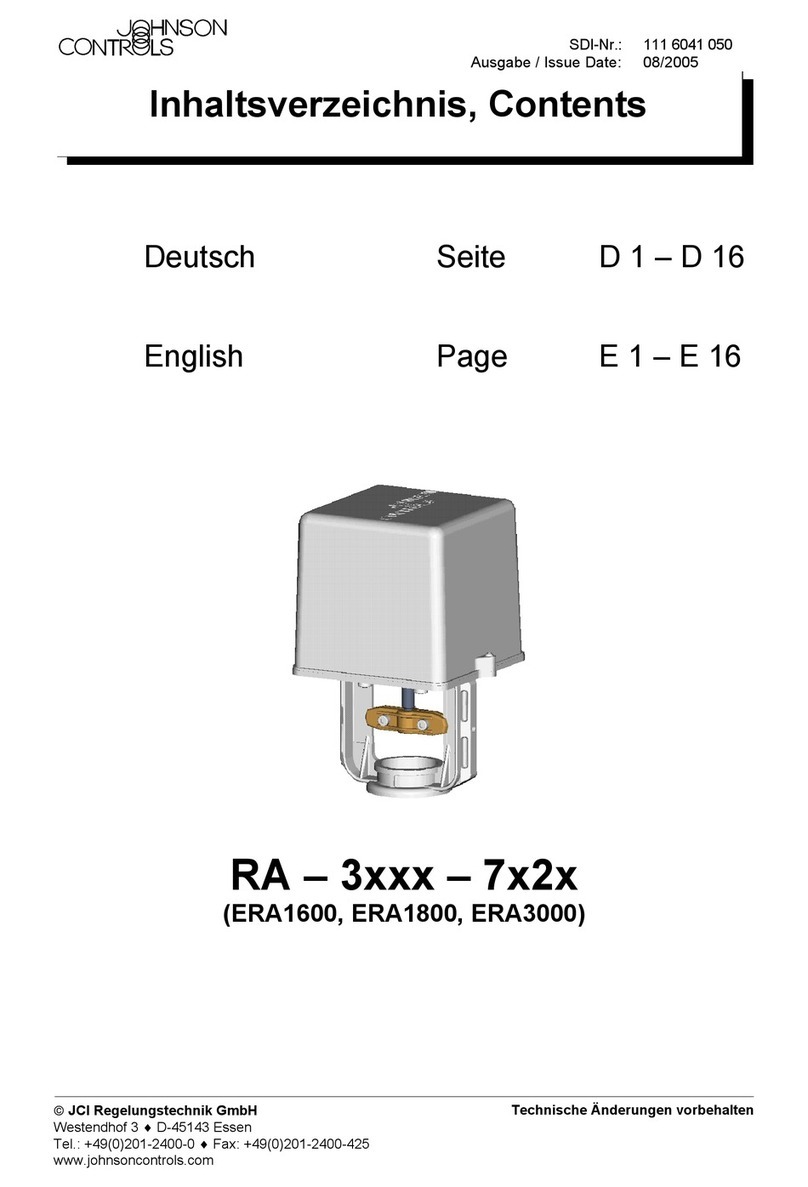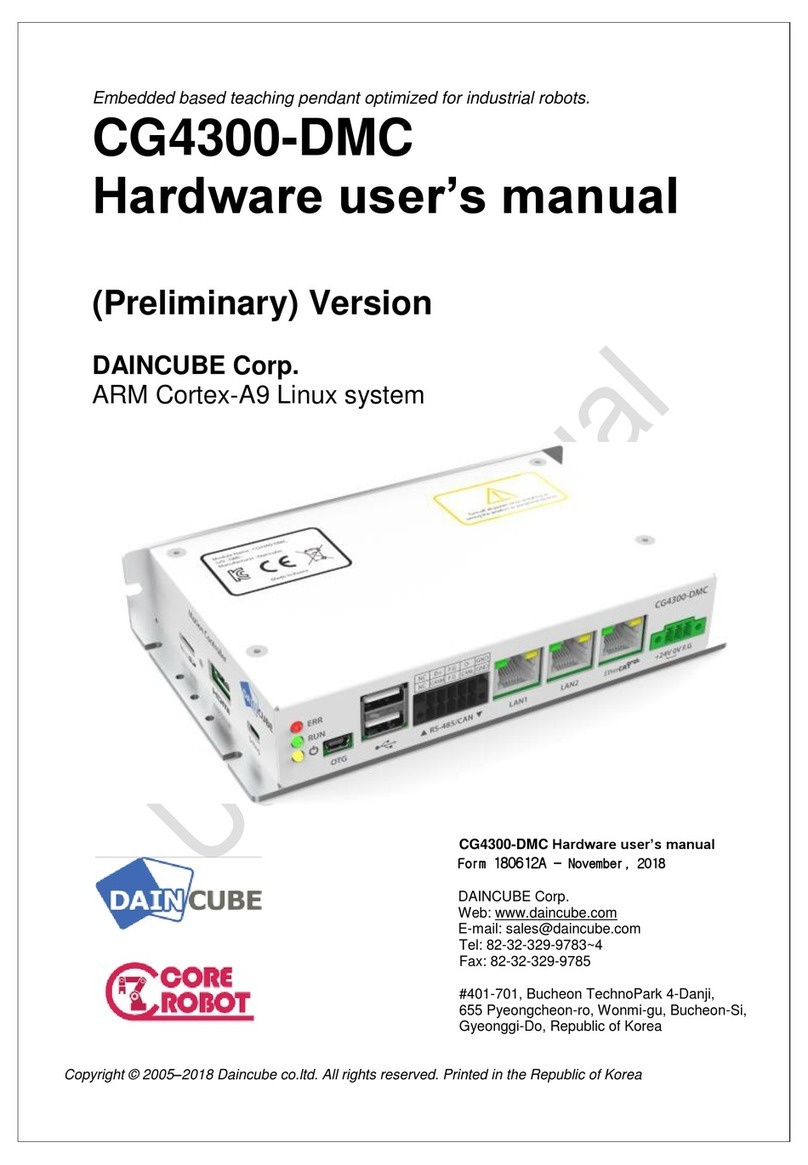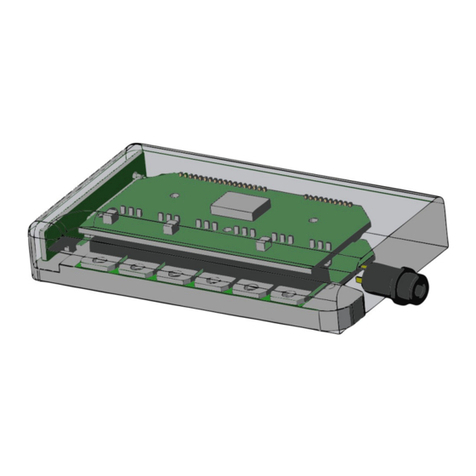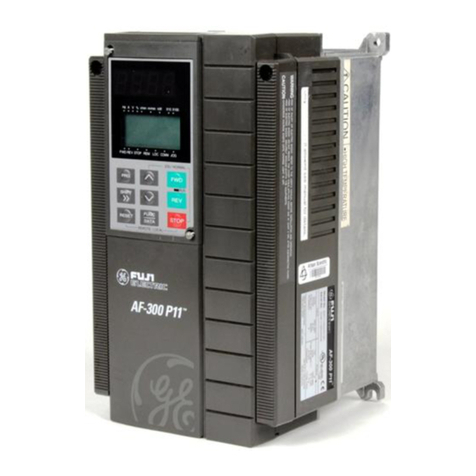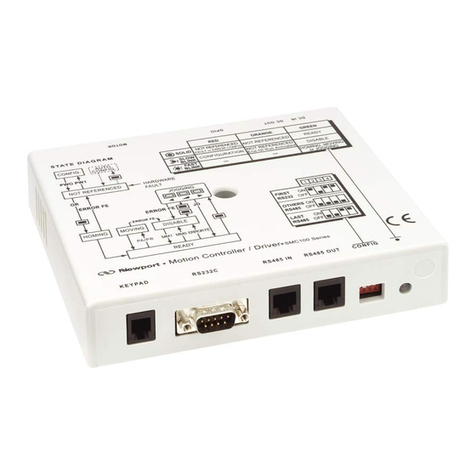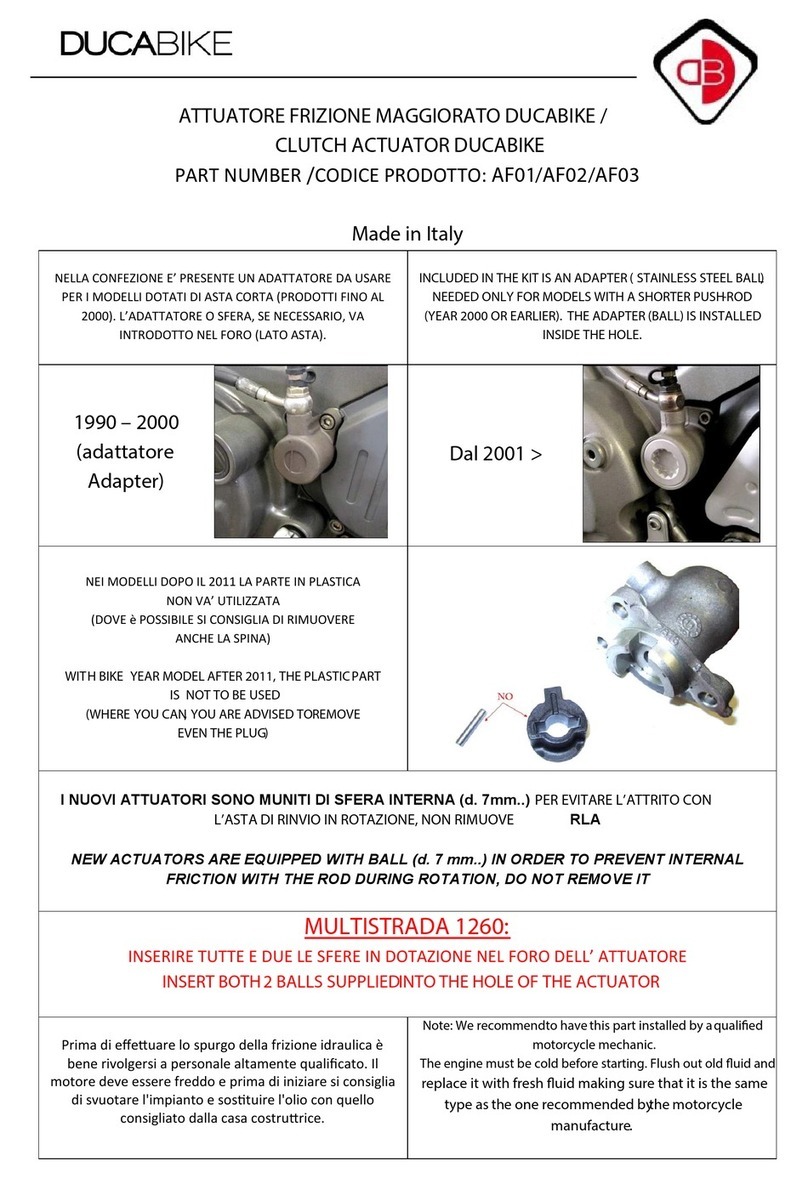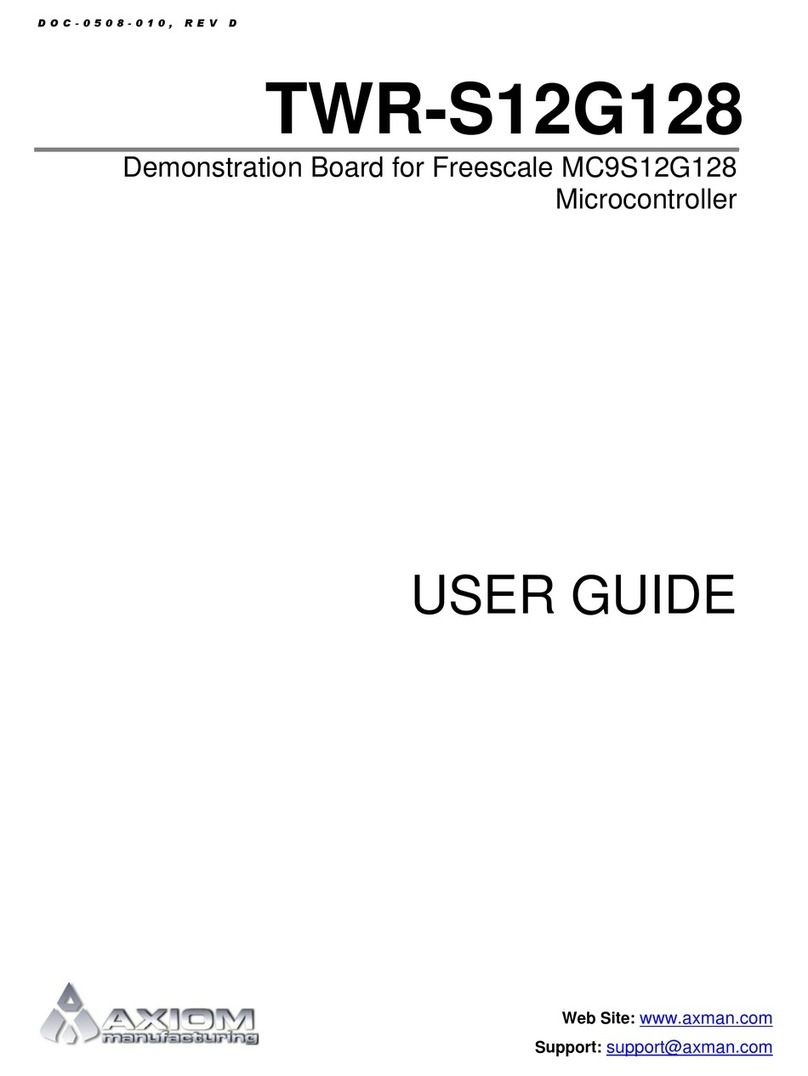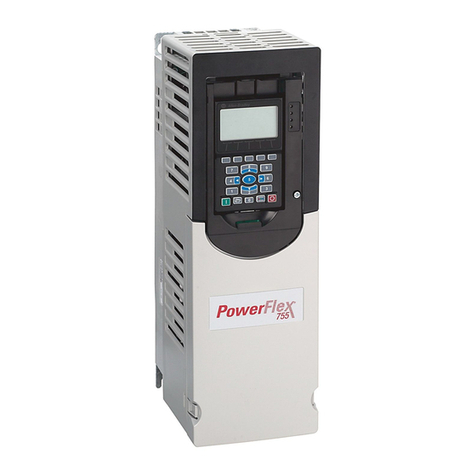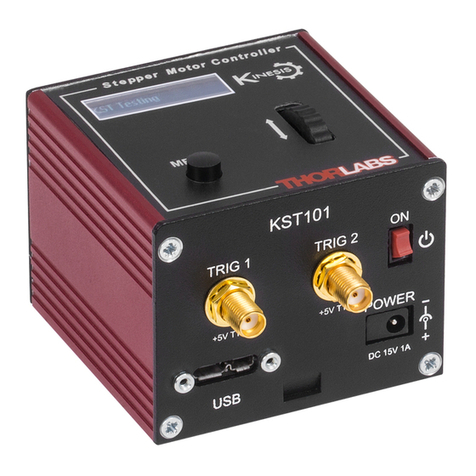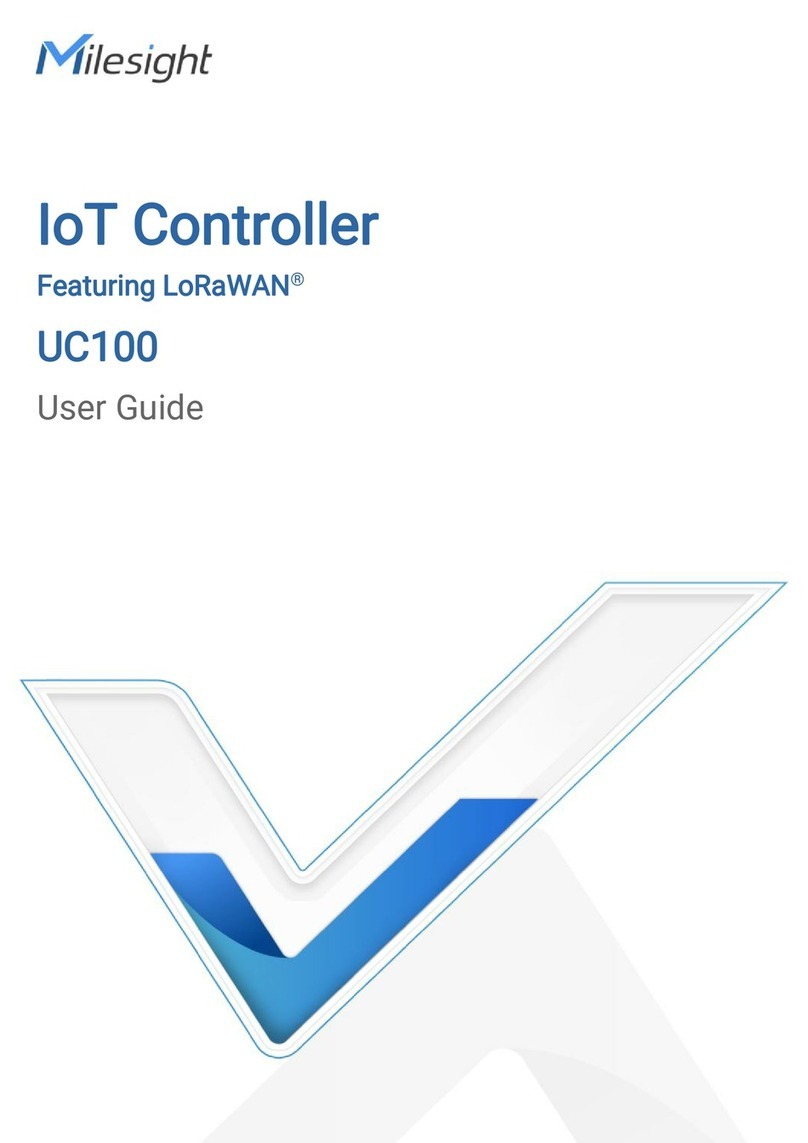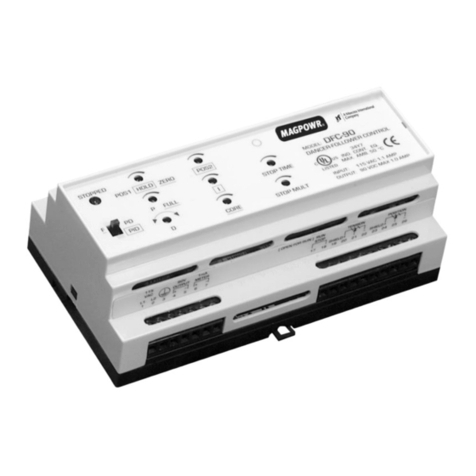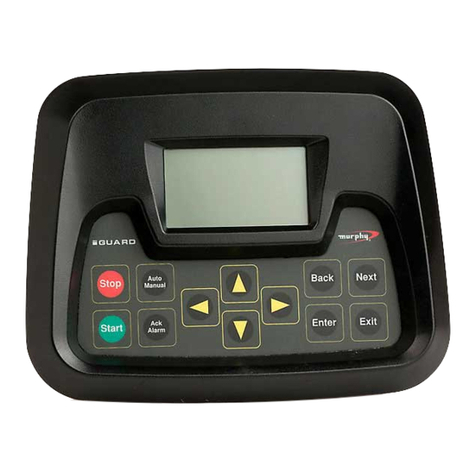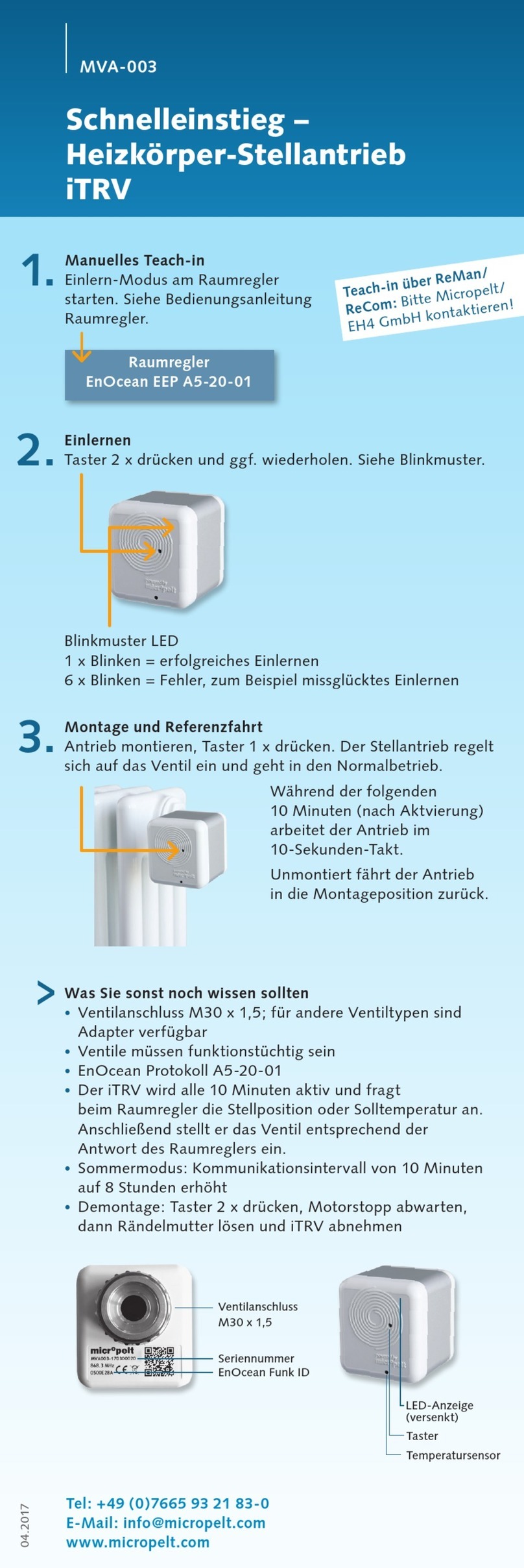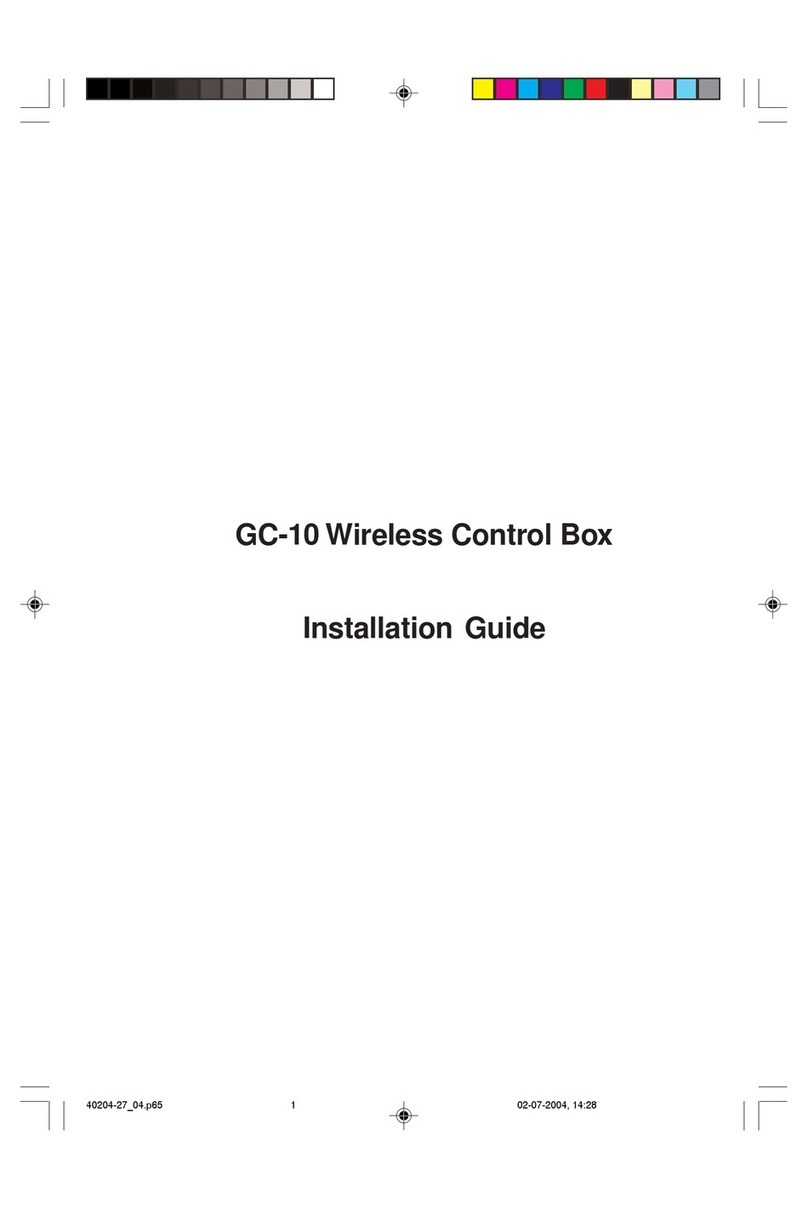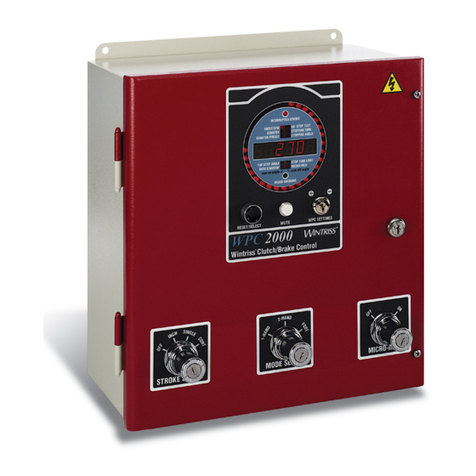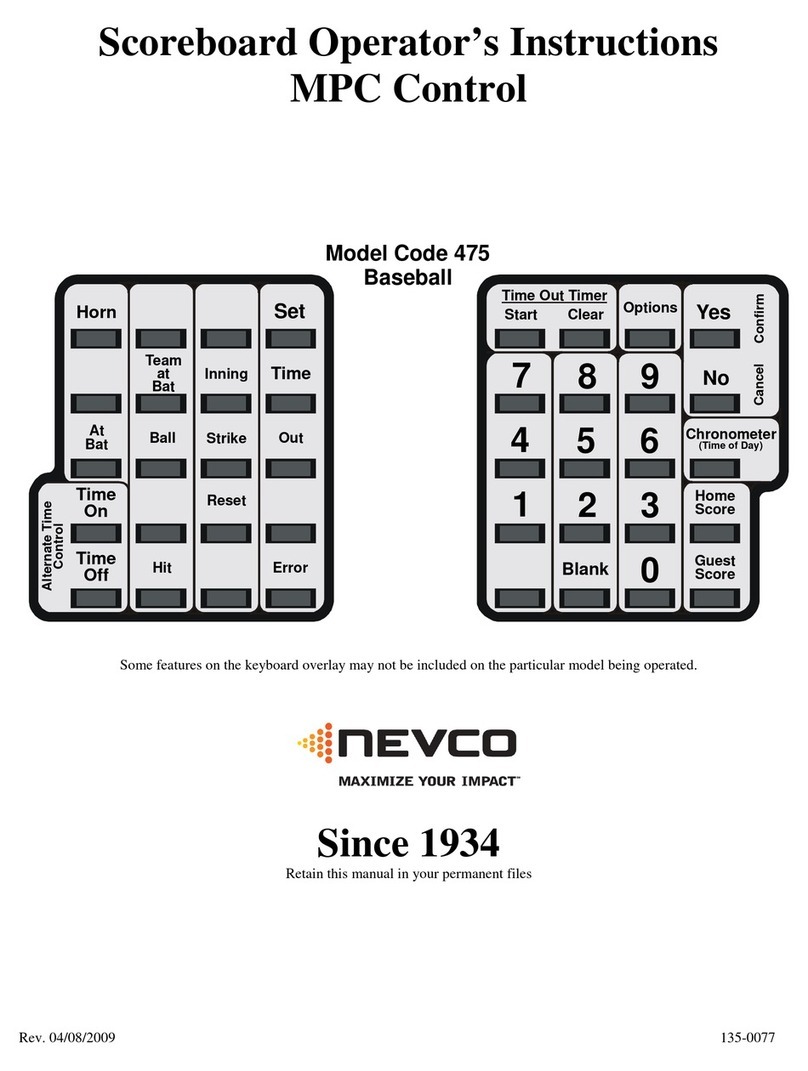Stober PROFINET SD6 User manual

PROFINET – SD6
Operating manual
en-US
11/2019
ID 442710.03

Table of contents STOBER
ii
11/2019 | ID 442710.03
Table of contents
1 Foreword .................................................................................................................................................................. 5
2 User information ....................................................................................................................................................... 6
2.1 Storage and transfer ................................................................................................................................................ 6
2.2 Described product.................................................................................................................................................... 6
2.3 Timeliness ................................................................................................................................................................ 6
2.4 Original language ..................................................................................................................................................... 6
2.5 Limitation of liability ................................................................................................................................................ 6
2.6 Formatting conventions........................................................................................................................................... 6
2.6.1 Use of symbols........................................................................................................................................ 7
2.6.2 Markup of text elements ........................................................................................................................ 8
2.6.3 Mathematics and formulas..................................................................................................................... 8
2.7 Trademarks .............................................................................................................................................................. 9
3 General safety instructions...................................................................................................................................... 10
3.1 Directives and standards........................................................................................................................................ 10
3.2 Qualified personnel................................................................................................................................................ 10
3.3 Intended use ..........................................................................................................................................................10
3.4 Operational environment and operation...............................................................................................................10
3.5 Disposal.................................................................................................................................................................. 11
4 Network structure ................................................................................................................................................... 12
5 PN6 communication module ................................................................................................................................... 13
5.1 Installation ............................................................................................................................................................. 13
6 Connection.............................................................................................................................................................. 14
6.1 Selecting suitable lines...........................................................................................................................................14
6.2 X200, X201: Fieldbus connection...........................................................................................................................14
7 What you should know before commissioning ........................................................................................................ 15
7.1 Program interfaces................................................................................................................................................. 15
7.1.1 DS6: Structure of the program interface .............................................................................................. 15
7.1.2 TIA Portal: Structure of the program interface..................................................................................... 17
7.2 Meaning of parameters .........................................................................................................................................19
7.2.1 Parameter groups ................................................................................................................................. 19
7.2.2 Parameter types and data types........................................................................................................... 20
7.2.3 Parameter types ................................................................................................................................... 21
7.2.4 Parameter structure ............................................................................................................................. 21
7.2.5 Parameter visibility ............................................................................................................................... 22
7.3 Power-loss protected storage................................................................................................................................ 22

STOBER Table of contents
11/2019 | ID 442710.03
iii
8 Commissioning ........................................................................................................................................................ 23
8.1 DS6: Configuring the drive controller .................................................................................................................... 24
8.1.1 Initiating the project ............................................................................................................................. 24
8.1.2 Parameterizing general PROFINET settings .......................................................................................... 26
8.1.3 Configuring PZD transmission............................................................................................................... 26
8.1.4 Transmitting and saving the configuration........................................................................................... 28
8.2 TIA Portal: Setting up a PROFINET network ...........................................................................................................30
8.2.1 Checking network addresses ................................................................................................................ 30
8.2.2 Installing the GSD file............................................................................................................................ 31
8.2.3 Mapping the PROFINET IO system........................................................................................................ 31
8.2.4 Configuring the IO controller ................................................................................................................ 32
8.2.5 Configuring IO devices .......................................................................................................................... 32
8.2.6 Transmitting a project configuration .................................................................................................... 34
8.2.7 Testing communication ........................................................................................................................ 34
8.2.8 Programming acyclical communication services .................................................................................. 35
9 Monitoring and diagnostics ..................................................................................................................................... 36
9.1 Connection monitoring .......................................................................................................................................... 36
9.2 LED display ............................................................................................................................................................. 37
9.2.1 PROFINET state ..................................................................................................................................... 37
9.2.2 PROFINET network connection............................................................................................................. 38
9.3 Events..................................................................................................................................................................... 39
9.3.1 Event 52: Communication..................................................................................................................... 39
9.4 Parameters............................................................................................................................................................. 40
9.4.1 A270 | X20x state | V0.......................................................................................................................... 40
9.4.2 A271 | PN state | V0............................................................................................................................. 40
9.4.3 A272 | PN module/submodule | V1..................................................................................................... 40
9.4.4 A273 | PN device name | V0 ................................................................................................................ 40
9.4.5 A274 | PN IP address | V0 .................................................................................................................... 41
9.4.6 A275 | PN subnet mask | V0 ................................................................................................................ 41
9.4.7 A276 | PN gateway | V0 ....................................................................................................................... 41
9.4.8 A279 | PN MAC addresses | V0 ............................................................................................................ 41
10 More on PROFINET? ................................................................................................................................................ 42
10.1 PROFINET ............................................................................................................................................................... 42
10.2 Device classes ........................................................................................................................................................ 42
10.3 Communication...................................................................................................................................................... 43
10.3.1 Cyclical communication: Process data.................................................................................................. 43
10.3.2 Acyclical communication: Parameter channel data.............................................................................. 43
10.4 Communication protocols...................................................................................................................................... 47
10.5 Ethernet network addressing................................................................................................................................. 47
10.5.1 MAC address......................................................................................................................................... 47
10.5.2 IP address.............................................................................................................................................. 48
10.5.3 Subnet mask ......................................................................................................................................... 48

Table of contents STOBER
iv
11/2019 | ID 442710.03
10.5.4 Subnets and gateways .......................................................................................................................... 48
10.5.5 MAC and IP addressing using device names......................................................................................... 48
11 Appendix................................................................................................................................................................. 49
11.1 Addressing parameters for RECORD record........................................................................................................... 49
11.1.1 Determining the Axis_number.............................................................................................................. 49
11.1.2 Calculating the Parameter_number ..................................................................................................... 49
11.1.3 Determining the subindex .................................................................................................................... 50
11.2 RDREC, WRREC: RECORD .......................................................................................................................................50
11.2.1 RECORD request: Header structure ...................................................................................................... 50
11.2.2 RECORD response: Header structure.................................................................................................... 51
11.2.3 Error codes............................................................................................................................................ 52
11.2.4 Attribute and format elements: Possible combinations....................................................................... 53
11.3 Process data modules ............................................................................................................................................ 54
11.4 Detailed information.............................................................................................................................................. 55
11.5 Abbreviations......................................................................................................................................................... 56
12 Contact.................................................................................................................................................................... 57
12.1 Consultation, service and address ......................................................................................................................... 57
12.2 Your opinion is important to us ............................................................................................................................. 57
12.3 Close to customers around the world....................................................................................................................58
Glossary .................................................................................................................................................................. 59
List of figures........................................................................................................................................................... 61
List of tables ............................................................................................................................................................ 62

STOBER 1 | Foreword
11/2019 | ID 442710.03
5
1 Foreword
PROFINET, an open industrial Ethernet standard, is especially well-suited for applications that require fast communication
with a high data rate combined with industrial IT functions.
PROFINET is real-time capable and uses IT standards like TCP/IP while also allowing the integration of fieldbus systems.
The 6th generation of STOBER drive controllers support PROFINET IO, a development of the successful PROFIBUS DP
standard.
The drive controllers are tailored for real-time communication of I/O data and offer the ability to transfer all required data,
parameters and IT functions at the same time.
For drive controllers of the SD6 series, the fieldbus functionality is provided via the PN6 communication module.

2 | User information STOBER
6
11/2019 | ID 442710.03
2 User information
This documentation aids you in installing and connecting the PN6 communication module in order to connect a SD6 of the
drive controller series (IO device) to a PLC as an IO controller using the PROFINET IO bus system.
Technical knowledge
Operating a PROFINET network requires having familiarity with PROFINET network technology and the basics of the
associated Siemens SIMATIC automation systems.
Technical requirements
Before you begin operating your PROFINET network, you need to wire the drive controllers and initially check that they are
functioning correctly. To do so, follow the instructions in the commissioning instructions for the SD6 drive controller.
2.1 Storage and transfer
As this documentation contains important information for handling the product safely and efficiently, it must be stored in
the immediate vicinity of the product until product disposal and be accessible to qualified personnel at all times.
Also pass on this documentation if the product is transferred or sold to a third party.
2.2 Described product
Drive controllers of the SD6 series in combination with the DriveControlSuite software (DS6) in V 6.4-D or later and
associated firmware in V 6.4-D or later.
2.3 Timeliness
Check whether this document is the latest version of the documentation. We make the latest document versions for our
products available for download on our website:
http://www.stoeber.de/en/downloads/.
2.4 Original language
The original language of this documentation is German; all other language versions are derived from the original language.
2.5 Limitation of liability
This documentation was created taking into account the applicable standards and regulations as well as the current state of
technology.
STOBER shall assume no responsibility for damage resulting from failure to comply with the documentation or from use
that deviates from the intended use of the product. This is especially true for damage caused by individual technical
modifications to the product or projecting and operation of the product by unqualified personnel.
2.6 Formatting conventions
Orientation guides in the form of signal words, symbols and special text markups are used to emphasize specific
information so that you are able identify it in this documentation quickly.

STOBER 2 | User information
11/2019 | ID 442710.03
7
2.6.1 Use of symbols
Safety instructions are identified with the following symbols. They indicate special risks when handling the product and are
accompanied by relevant signal words that express the extent of the risk. Furthermore, useful tips and recommendations
for efficient, error-free operation are specially highlighted.
ATTENTION!
Notice
This indicates that damage to property may occur
▪ if the stated precautionary measures are not taken.
CAUTION!
Caution
This word with a warning triangle indicates that minor personal injury may occur
▪ if the stated precautionary measures are not taken.
WARNING!
Warning
This word with a warning triangle means there may be a considerable risk of fatal injury
▪ if the stated precautionary measures are not taken.
DANGER!
Danger
This word with a warning triangle indicates that there is a considerable risk of fatal injury
▪ if the stated precautionary measures are not taken.
Information
Information indicates important information about the product or serves to emphasize a section in the documentation that
deserves special attention from the reader.

2 | User information STOBER
8
11/2019 | ID 442710.03
2.6.2 Markup of text elements
Certain elements of the continuous text are distinguished as follows.
Important information Words or expressions with a special meaning
Interpolated position mode Optional: File or product name or other name
Detailed information Internal cross-reference
http://www.samplelink.com External cross-reference
Software and displays
The following formatting is used to identify the various information content of elements referenced by the software
interface or a drive controller display, as well as any user entries.
Main menu
Settings
Window names, dialog box names, page names or buttons, combined
proper nouns, functions referenced by the interface
Select
Referencing method A
Predefined entry
Save your
<own IP address>
User-defined entry
EVENT 52:
COMMUNICATION
Display indicators (status, messages, warnings, faults) for status
information referenced by the interface
Keyboard shortcuts and command sequences or paths are represented as follows.
[CTRL], [CTRL] + [S]
Key, shortcut
Table > Insert table Navigation to menus/submenus (path specification)
Interpretation of parameter identification
Parameter identification consists of the following elements, where short forms are also possible, i.e. only specifying a
coordinate or the combination of coordinate and name.
E50 V0
Coordinate Name Version
Drive controller
2.6.3 Mathematics and formulas
The following signs are used to represent mathematical relationships and formulas.
- Subtraction
+ Addition
× Multiplication
÷ Division
| | Amount

STOBER 2 | User information
11/2019 | ID 442710.03
9
2.7 Trademarks
The following names used in connection with the device, its optional equipment and its accessories are trademarks or
registered trademarks of other companies:
Windows®,
Windows® XP,
Windows® 7,
Windows® 10
Windows®, das Windows®-Logo, Windows®XP, Windows®7 und Windows®10 are
registered trademarks of Microsoft Corporation in the United States and/or other
countries.
PROFIBUS®,
PROFINET®
The PROFIBUS and the PROFINET logo are registered trademarks of PROFIBUS
Nutzerorganisation e.V., Karlsruhe, Germany.
SIMATIC®,
TIA Portal®
SIMATIC® and TIA Portal® are registered trademarks of Siemens AG, Munich,
Germany.
All other trademarks not listed here are the property of their respective owners.
Products that are registered as trademarks are not specially indicated in this documentation. Existing property rights
(patents, trademarks, protection of utility models) are to be observed.

3 | General safety instructions STOBER
10
11/2019 | ID 442710.03
3 General safety instructions
There are risks associated with the product described in this documentation that can be prevented by complying with the
described warning and safety instructions as well as the included technical rules and regulations.
3.1 Directives and standards
The European directives and standards relevant for the product specified in this documentation can be taken from the
directives and standards of the corresponding drive controller.
3.2 Qualified personnel
In order to be able to perform the tasks described in this documentation, the persons instructed to perform them must
have the appropriate professional qualification and be able to assess the risks and residual hazards when handling the
products. For this reason, all work on the products as well as their operation and disposal may be performed only by
professionally qualified personnel.
Qualified personal are persons who have acquired authorization to perform these tasks either through training to become a
specialist and/or instruction by specialists.
Furthermore, valid regulations, legal requirements, applicable basic rules, this documentation and the safety instructions
included in it must be carefully read, understood and observed.
3.3 Intended use
As defined by DIN EN 50178, SD6 drive controllers are electrical devices operating as power electronics to control the flow
of energy in high-voltage systems. They are intended solely for the operation of synchronous servo motors, asynchronous
motors, linear motors or torque motors.
The connection of other electronic loads or operation outside applicable technical specifications constitutes improper use.
3.4 Operational environment and operation
The products are subject to sales restrictions in accordance with IEC 61800-3.
The products are not designed for use in a public low-voltage network that supplies residential areas. Radio-frequency
interference can be expected if the products are used in this type of network.
The products are intended exclusively for installation in control cabinets with at least protection class IP54.
Always operate the products within the limits specified by the technical data.
The following applications are prohibited:
§Use in potentially explosive atmospheres
§Use in environments with harmful substances as specified by EN 60721, such as oils, acids, gases, vapors, dust and
radiation
Implementation of the following applications is permitted only after approval from STOBER:
§Use in non-stationary applications
§The use of active components (drive controllers, supply modules, energy recovery units or discharge units) from third-
party manufacturers
The products are designed exclusively for operation in TN networks.

STOBER 3 | General safety instructions
11/2019 | ID 442710.03
11
3.5 Disposal
Observe the current national and regional regulations when disposing of the product! Dispose of the individual product
parts depending on their properties, e.g. as:
§Electronic waste (circuit boards)
§Plastic
§Sheet metal
§Copper
§Aluminum
§Battery

4 | Network structure STOBER
12
11/2019 | ID 442710.03
4 Network structure
A PROFINET network generally consists of a PROFINET segment with an IO controller and all IO devices belonging to this
area, i.e. drive controllers of the SD6 series and a PC as the IO supervisor.
The PROFINET network structure is generally tailored to the specific requirements of the respective system. STOBER drive
controllers support a star, line or tree topology.
All IO standard devices are integrated into the PROFINET network using internal or external switches (100Mbps).
You can configure and parameterize the drive controllers using the DS6 DriveControlSuite software from STOBER; Siemens
TIA Portal lets you do this for the entire PROFINET network, for instance.
The following graphic presents an abstract of a PROFINET network; the devices displayed have internal switches.
PROFINET
IO devices
3 x
IO controller
SIMATIC S7-1500
Command levelController level
IO supervisor
commissioning
Field level
Commissioning
SD6 drive controllers
Fig.1: PROFINET: Network structure

STOBER 5 | PN6 communication module
11/2019 | ID 442710.03
13
5 PN6 communication module
The drive controllers of the SD6 series are connected to a higher-level controller using PN6 communication modules, which
provide the necessary fieldbus interfaces.
The communication modules match the PROFINET IO standard and enable cyclical and acyclical data exchange between the
drive controllers and the controller.
5.1 Installation
Installation work is permitted only when no voltage is present. Observe the five safety rules.
Note the minimum clearances listed in the technical data during installation in order to prevent the drive controller from
overheating.
Protect the device against falling parts (wire scraps, wires, pieces of metal, etc.) during installation or other work in the
control cabinet. Parts with conductive properties may result in a short circuit or failure inside the drive controller.
Remove the additional covers before commissioning so that the drive controller does not overheat.
DANGER!
Electrical voltage! Risk of fatal injury due to electric shock!
▪ Always switch off all power supply voltage before working on the devices!
▪ Note the discharge time of the DC link capacitors in the general technical data. You can only determine the absence
of voltage after this time period.
ATTENTION!
Damage to property due to electrostatic discharge!
Take appropriate measures when handling exposed circuit boards, e.g. wearing ESD-safe clothing.
Do not touch contact surfaces.
Tool and material
You will need:
§A TORX screwdriver TX10
§The cover and screws included with the communication module
Installation
1. Unscrew the fastening screw of the dummy cover on top of the drive controller and remove the cover.
2. Slide the communication module on the guide rails into the drive controller.
3. Press on the module in order to push the pin contacts into the box header.
4. Set the tabs of the cover included with the communication module in front in the notch at an angle.
5. Place the cover on the drive controller so that the tabs lie under the edge.
6. Attach the cover using both screws.

6 | Connection STOBER
14
11/2019 | ID 442710.03
6 Connection
For network connection, PROFINET only allows switches; these in turn allow for flexible network topology and nearly
unlimited network expansion of several kilometers at maximum speed.
6.1 Selecting suitable lines
The PROFINET transmission technology is based on the Fast Ethernet standard.
A PROFINET network generally consists of symmetrical, shielded copper cables twisted in pairs (shielded twisted pair, CAT
5e quality level).
Signals are transmitted according to the 100BASE TX method, i.e. with a transfer rate of 100Mbps at a frequency of
125MHz.
A maximum of 1440bytes can be transferred per frame. The maximum cable length is 100m.
PROFINET cables exist in different versions that are tailored to different application scenarios and ambient conditions.
We recommend using the cables specified in the PROFINET installation guidelines. They are adjusted for use in automation
technology with regard to usage, resistance, EMC properties and color coding.
There are type A, B and C cables, differentiated by installation type:
§Type A
4-wire shielded copper cable for fixed installation
§Type B
4-wire shielded copper cable for flexible installation
§Type C
4-wire shielded copper cable for constant movements
6.2 X200, X201: Fieldbus connection
In order to be able to connect the drive controllers to other PROFINET nodes, an integrated switch with both X200 and X201
RJ-45 sockets is provided. The sockets are located on top of the device. The associated pin assignment and color coding
correspond to the EIA/TIA-T568B standard.
Socket Pin Designation Function
1|2| ... |7|8 1 Tx+ Communication
2 Tx−
3 Rx+
4 — —
5 — —
6 Rx− Communication
7 — —
8 — —
Tab. 1: X200 and X201 connection description

STOBER 7 | What you should know before commissioning
11/2019 | ID 442710.03
15
7 What you should know before commissioning
The following chapters provide a quick introduction to the structure of the program interface and accompanying window
designations as well as relevant information about parameters and generally saving your project configuration.
7.1 Program interfaces
The following chapters include an overview of the program interfaces for the described software components.
7.1.1 DS6: Structure of the program interface
The DriveControlSuite commissioning software (DS6) offers a graphic interface that you can use to project, parameterize
and start up your drive controller quickly and efficiently.
1
2
3
4
56
Fig.2: DS6 – Program interface
1 Project tree
2 Project menu
3 Workspace
4 Parameter description
5 Parameter check
6 Messages
7.1.1.1 Individualized workspace
The project tree (1) and project menu (2) are connected and, like the parameter check and messages (5, 6), can also be
docked at the left, right or bottom edge of the screen. This program window can also be displayed or hidden using the View
menu.
The workspace (3) and parameter description (4) are also connected to each other and always positioned in the middle.
Both areas can be minimized or maximized.

7 | What you should know before commissioning STOBER
16
11/2019 | ID 442710.03
7.1.1.2 Navigation using sensitive circuit diagrams
Fig.3: DriveControlSuite: Navigation using text links and symbols
In order to illustrate graphically the processing sequence of actual and set values, the use of signals or certain drive
component arrangements and to make configuring the accompanying parameters easier, they are displayed on the
respective wizard pages of the workspace in the form of circuit diagrams.
Blue text links or clickable icons indicate links within the program. These refer to the corresponding wizard pages and, as a
result, allow you to reach additional helpful detail pages with just a click.

STOBER 7 | What you should know before commissioning
11/2019 | ID 442710.03
17
7.1.2 TIA Portal: Structure of the program interface
The Siemens Totally Integrated Automation Portal (TIA Portal) offers a platform you can use to commission your PROFINET
system. The TIA Portal is broken down into the portal view and the project view.
TIA portal view
The TIA overall functionality is broken down into different task areas that you can reach using portals. The following graphic
shows the interface elements of the TIA portal view relevant to this documentation.
2
1
3
Fig.4: TIA Portal – Program interface of the portal view
1 Portal selection
2 Functions of a selected portal
3 Switch to project view

7 | What you should know before commissioning STOBER
18
11/2019 | ID 442710.03
TIA project view
The TIA project view offers you access to all components of a project. The following graphic shows the interface elements of
the TIA portal view relevant to this documentation.
2
3
1
4
5
6
Fig.5: TIA Portal – Program interface of the project view
1 Project navigation
2 Detail view
3 Work area (topology view, network view, device view)
4 Inspector window
5 Task cards (hardware catalog, online tools, tasks, libraries)
6 Switch to the portal view

STOBER 7 | What you should know before commissioning
11/2019 | ID 442710.03
19
7.2 Meaning of parameters
You can use parameters to adapt the function of a drive controller to your specific drive model and your work environment.
In addition, parameters visualize the current actual values (actual velocity, actual torque, etc.) and trigger general actions
like Save values, Test phase etc.
7.2.1 Parameter groups
Parameters are assigned to individual groups by topic. The 6th generation of STOBER drive controllers differentiates
between the following parameter groups.
Group Topic
A Drive controllers, communication, cycle times
B Motor
C Machine, velocity, torque/force, comparators
D Set value
E Display
F Terminals, analog and digital inputs and outputs, brake
G Technology – Part 1 (depending on the respective application)
H Encoders
I Motion (all motion settings)
J Motion blocks
K Control panel
L Technology – Part 2 (depending on the respective application)
M Profile
P Customer-specific parameters (programming)
Q Customer-specific parameters, instance-dependent (programming)
R Production data for the drive controller, motor, brakes, motor adapter, gear unit and geared motor
S Safety (safety technology)
T Scope
U Protection functions
Z Fault counter
Tab. 2: Parameter groups

7 | What you should know before commissioning STOBER
20
11/2019 | ID 442710.03
7.2.2 Parameter types and data types
In addition to topic-based sorting in individual groups, all parameters belong to a certain data type and parameter type. The
data type of a parameter is displayed in the parameter list, properties table. The connections between parameter types,
data types and their value range can be found in the following table.
Type Style Value range (decimal)
INT8 Integer or selection 1 byte (signed) -128 – 127
INT16 Integer 2 bytes (1 word, signed) -32768 – 32767
INT32 Integer or position 4 bytes (1 word, unsigned) -21474836480 – 2147483647
BOOL Binary number 1 bit (internal:
LSB in 1 byte)
0, 1
BYTE Binary number 1 byte (unsigned) 0 – 255
WORD Binary number 2 bytes (1 word, unsigned) 0 – 65535
DWORD Binary number or parameter
address
4 bytes (1 word, unsigned) 0 – 4294967295
REAL32 Floating-point number Floating point (1 word,
unsigned)
In accordance with ANSI/
IEEE 754
STR8 Text Text (8 characters) –
STR16 Text Text (16 characters) –
STR80 Text Text (80 characters) –
Tab. 3: Parameters – Data types, styles, possible values
Parameter types – Use
§Integer, floating-point number
For general computing processes
Example: Set and actual values
§Selection
Numeric value to which a direct meaning is assigned
Example: Sources for signals or set values
§Binary number
Bit-oriented parameter information that is collected in binary
Example: Control and status words
§Position
Integer combined with associated units and decimal places
Example: Actual and set values of positions
§Velocity, acceleration, deceleration, jerk
Floating-point number combined with the associated units and decimal places
Example: Actual and set values for velocity, acceleration, deceleration, jerk
§Parameter address
Corresponds to the storage location of another parameter
Example: Indirect read sources for analog and digital outputs and for fieldbus mapping
§Text
Outputs or messages
Example: Displays
Table of contents
Other Stober Controllers manuals
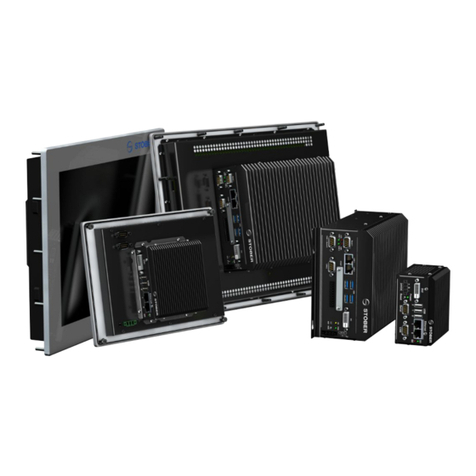
Stober
Stober MC6 User manual
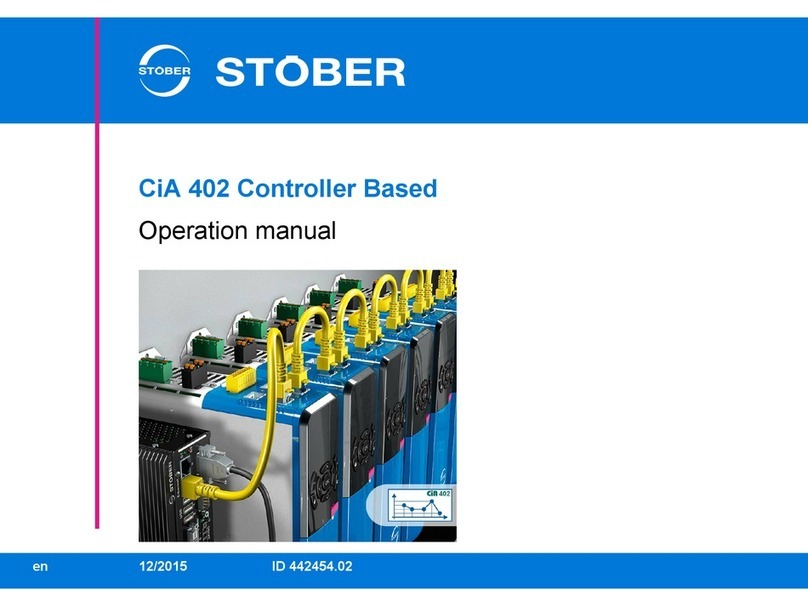
Stober
Stober CiA 402 User manual

Stober
Stober MC6 User manual

Stober
Stober SD6 Series User manual
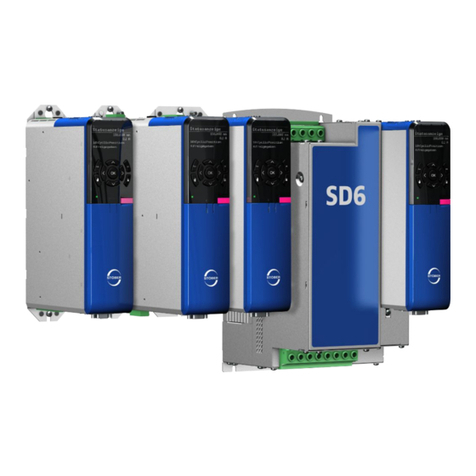
Stober
Stober SD6 Series Training manual
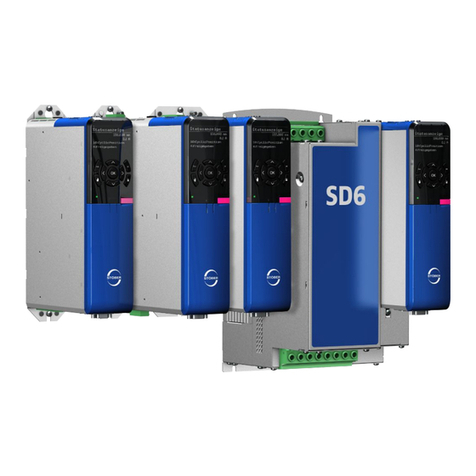
Stober
Stober SD6 Series User manual

Stober
Stober SD6 Series User manual
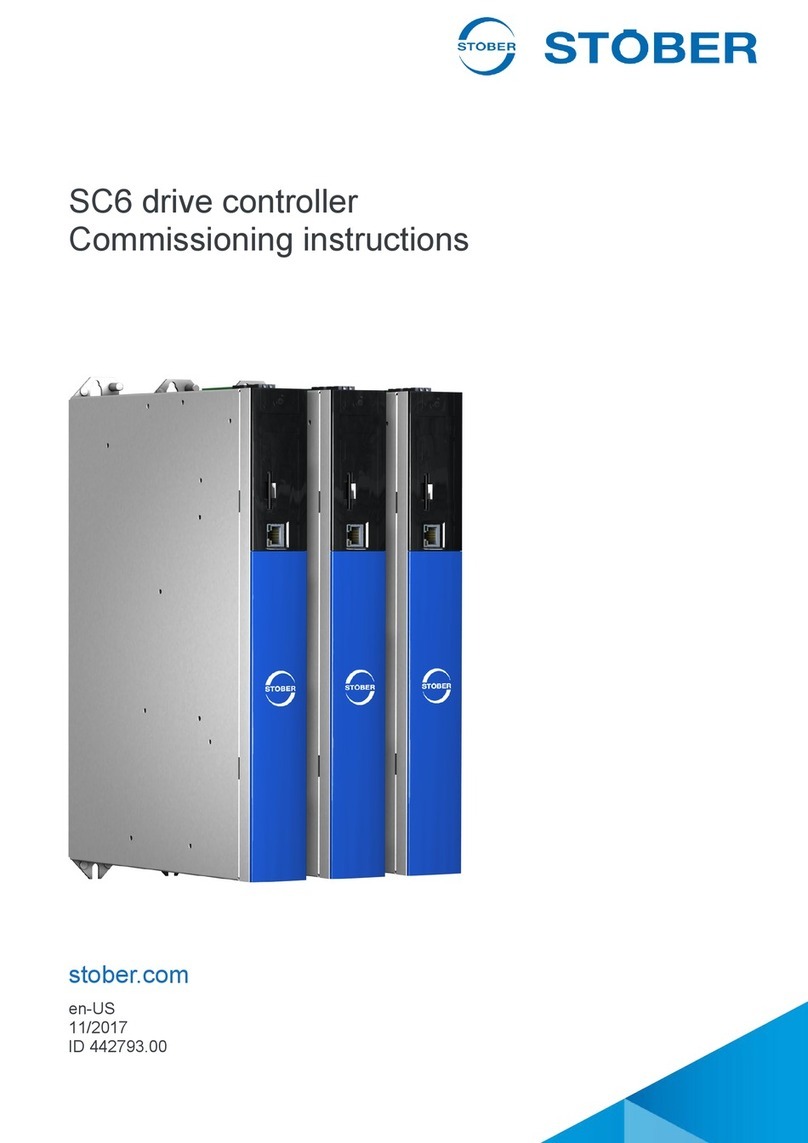
Stober
Stober SC6 Series Training manual

Stober
Stober SD6 Series Training manual
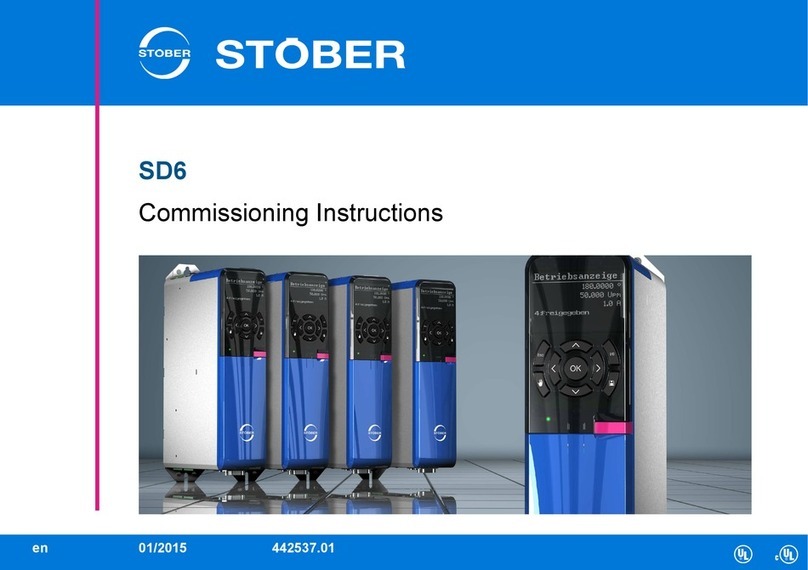
Stober
Stober SD6 Series Training manual
